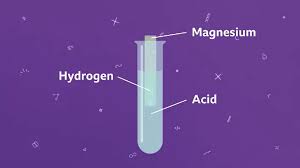Navigating the Digital Landscape: Challenges and Opportunities with Access to Information

With the rise of technology and the internet, we have access to more information than ever before. We can communicate with people on the other side of the world, learn about different cultures and lifestyles, and access a wealth of knowledge at our fingertips. However, with this increased access to information comes a new set of challenges.
One of the biggest challenges we face is determining what information is trustworthy and accurate. With so much content available online, it can be difficult to distinguish fact from fiction. Misinformation and fake news can spread quickly on social media platforms, leading to confusion and mistrust.
Another challenge we face is maintaining our privacy in an increasingly connected world. With so much personal data being collected by companies and governments, it can be difficult to know who has access to our information and how it is being used.
Despite these challenges, there are steps we can take to navigate this new digital landscape. One important step is to be critical consumers of information. Before sharing or believing something we see online, we should take the time to fact-check and verify its accuracy.
Another important step is to protect our privacy by being mindful of what personal information we share online. We should use strong passwords, enable two-factor authentication whenever possible, and limit the amount of personal data we share on social media platforms.
Ultimately, with increased access to information comes increased responsibility. It is up to each individual to take ownership of their digital lives and make informed decisions about how they use technology and engage with online content. By doing so, we can reap the benefits of a connected world while also protecting ourselves from its potential pitfalls.
5 Common Queries About the Usage and Function of ‘With’
- How to use it with?
- What is a sentence using with?
- What are the uses of with?
- What kind of a word is with?
- What can I say instead of with?
How to use it with?
The word “with” is a versatile preposition that can be used in a variety of ways to indicate a relationship between two things or concepts. Here are some common ways to use “with”:
- To indicate association or accompaniment: “I went to the store with my friend.”
- To indicate the use of an instrument or tool: “I wrote this essay with a pen and paper.”
- To indicate a characteristic or quality: “She is talented with music.”
- To indicate agreement or conformity: “I agree with your opinion.”
- To indicate time or duration: “I worked on the project with him for two months.”
- To indicate cause and effect: “He got sick with the flu.”
When using “with,” it’s important to consider the context and meaning of the sentence to ensure that it is being used correctly and effectively.
What is a sentence using with?
I am going to the store with my friend.
What are the uses of with?
The preposition “with” has several uses in English. Here are some common ones:
To indicate association or accompaniment: For example, “I went to the park with my friends.”
To indicate the means or tool used to accomplish something: For example, “I wrote this essay with a pen and paper.”
To indicate the manner in which something is done: For example, “She spoke with confidence.”
To indicate a characteristic or quality of something or someone: For example, “He’s a man with a kind heart.”
To indicate a condition or circumstance that accompanies something else: For example, “With all due respect, I disagree with your opinion.”
To express time or duration: For example, “I studied for three hours with no breaks.”
7. In mathematics and science, to show a relationship between two variables: For example, “The speed of an object is directly proportional to its mass when moving with constant force.”
What kind of a word is with?
‘With’ is a preposition, which is a word that shows the relationship between a noun or pronoun and other words in a sentence. It is used to indicate the association, connection, or accompaniment of one thing with another.
What can I say instead of with?
There are many alternatives to the word “with” depending on the context and the intended meaning. Here are some examples:
– Alongside
– Together with
– Accompanied by
– In addition to
– Including
– Amongst
– Amidst
– By means of
– Through
– Using
It’s important to choose the right word that fits the context and conveys your intended meaning.
